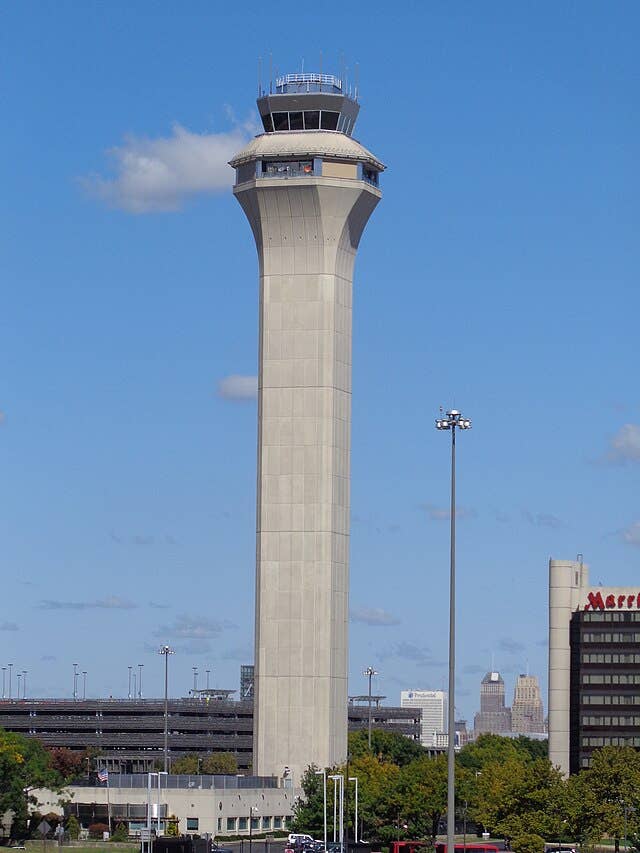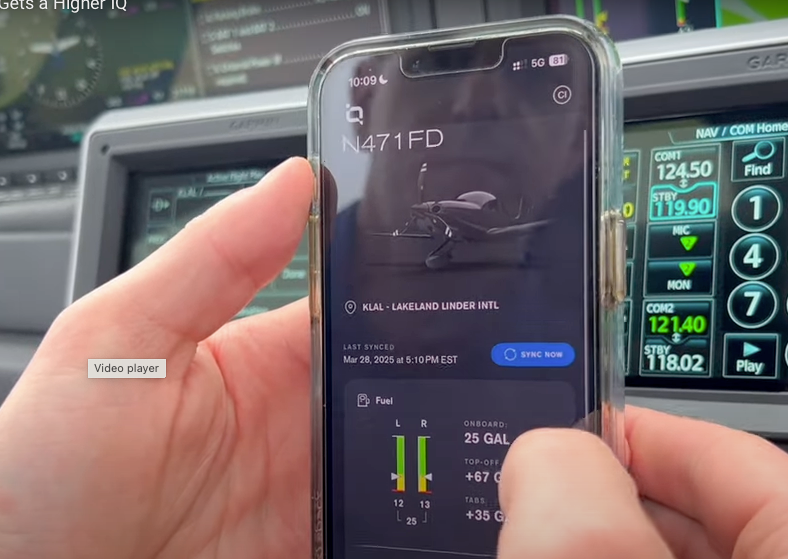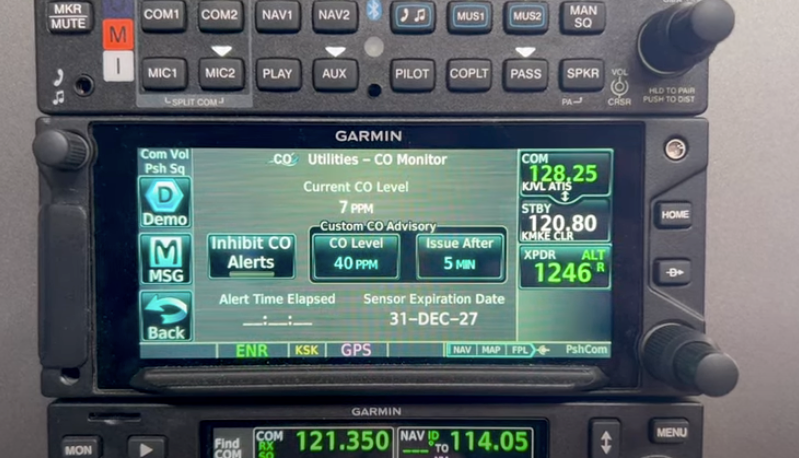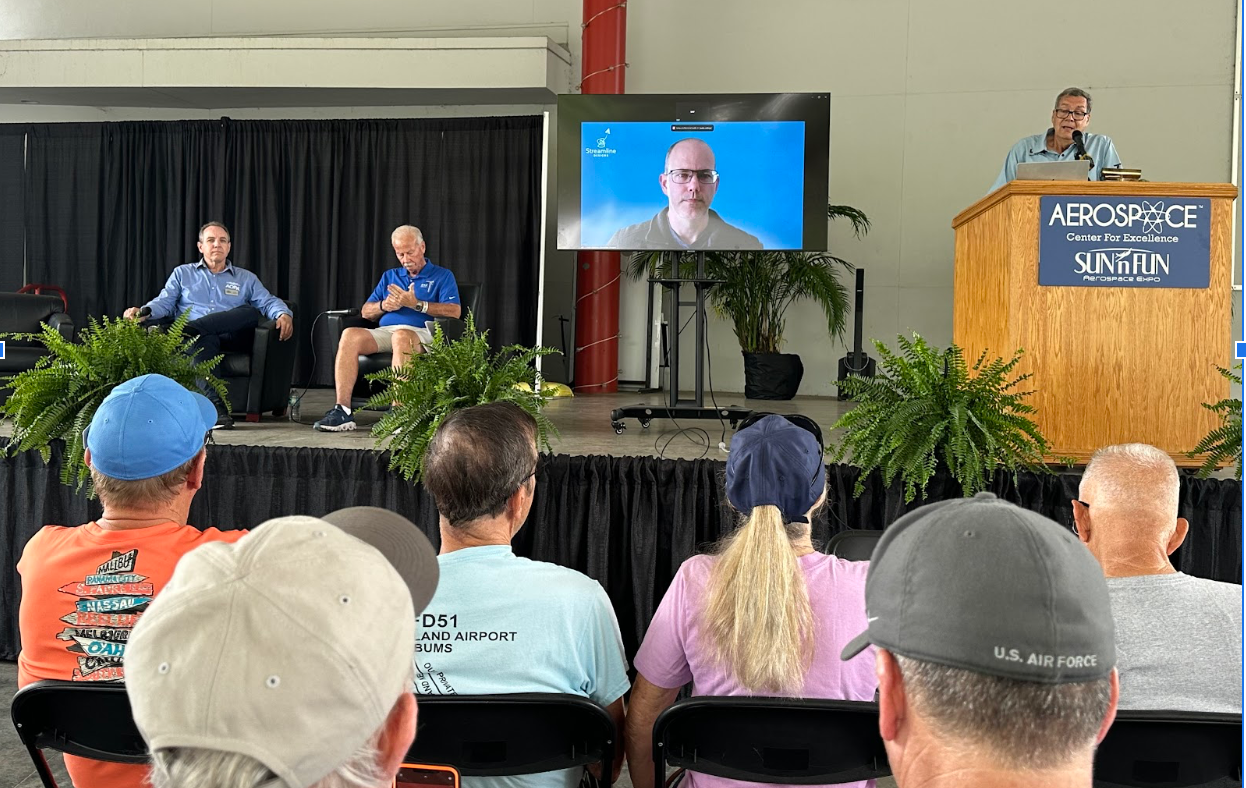Tailwheel Landing Battle: Three-Point or Wheel?
After features on tailwheel flying here in AVweb in July and November, it’s time to step up to the graduate-level issue for the topic. It’s tailwheel flying’s hot button question-whether three-point or wheel landings are “better” or safer. If you want to stir things up some evening when a bunch of tailwheel pilots are at the bar, look innocent as you make that inquiry. Wander away for 10 minutes or so. When you return, be ready to duck, as the chairs may be flying.
After features on tailwheel flying here in AVweb in July and November, it's time to step up to the graduate-level issue for the topic. It's tailwheel flying's hot button question—whether three-point or wheel landings are "better" or safer. If you want to stir things up some evening when a bunch of tailwheel pilots are at the bar, look innocent as you make that inquiry. Wander away for 10 minutes or so. When you return, be ready to duck, as the chairs may be flying.
Part of the problem lies with a simple lack of data on the type of landing made when looking at accident reports. We can separate out tailwheel airplanes themselves in NTSB data and, wonder of wonders, discover that pilots are far more prone to landing accidents in them than in the nosewheel variety. Big deal, insurance underwriters have known that for years. We aren't breaking any new ground. Unfortunately, the accident reports do not shed a lot of light on the issue of whether a three-point landing is generally safer than a wheel landing or the converse.
Full stall. Three Point. The Same?
Three-point, full-stall and tailwheel-first landings are subtly different. A tailwheel airplane may or may not be fully stalled in three-point attitude. Thus, a three-point touchdown may or may not involve fully stalling the particular airplane you are flying. In those that are not stalled in three-point attitude, it is usually possible to roll the tailwheel first on landing, if desired. A full-stall landing in those airplanes means the tailwheel rolls and then the mains drop in from some, usually small, distance. For convenience, I'm going to refer to three-point landings as a catchall so as to include the tailwheel-first, three-point and full-stall landings.
There are also nearly an infinite number of versions of wheel landings, although they can be broken down to being considered tail-high, with the airplane more horizontal, and tail-low where the tailwheel is relatively near, but not touching, the runway on landing. No matter what, if the tailwheel does not touch the runway (as a result of the pilot's intentional act) until some very definite time after the mains, it's a wheel landing.
The landing in which the mains touch followed by the smacking sound of the tailwheel impacting terra firm doesn't have a name beyond either "Oops" or "Oh, #$%^". It is generated in a number of ways: an attempt at a wheel landing in which the pilot does not release the back pressure on the stick when the mains touch, a wheel landing with a descent rate that is not arrested and in which the pilot allows the tail to continue going down after the mains make contact, or by an incomplete flare when going for a three-point arrival. No matter what the cause, the effect can rapidly become a bounding, bouncing, scary gyration as the airplane hops from tailwheel to main gear. If the pilot attempts to arrest things by thrashing the stick back and forth in hopes of turning the exercise back into a wheel landing, the most common consequence is further unpleasantness, which can become most amazingly loud as components of the airplane other than the wheels make contact with the globe. There are two good cures to this "crow hopping": full aft stick to keep the tail down, or a go-around. Experience and judgment are the only answers to the question of "Which should I do in that situation?" It may be possible to smoothly pull the stick all the way aft and hold it in position (along with full aileron deflection into the wind); however, if you're eating up runway or if there is any directional uncertainty, a go-around is probably the better maneuver.
In This Corner, The Advantages of Three-Point Landings
Minimum energy at touchdown has a heck of a lot going for it, assuming the airplane has flight controls that remain effective at that speed and the pilot is willing to put them to use. The airplane's kinetic energy has to be dissipated at some point in the landing sequence. So, as a general rule, the less kinetic energy we have to shed when we touch the planet, the less likely we are to come to a stop in a disagreeable fashion. A few hours reading NTSB landing accident reports cause one to come to the depressing conclusion that most landing accidents involve failure of the loose nut on the control yoke to appropriately deal with the energy of the airplane during the landing roll. We don't seem to stick our collective fingers in it when the airplane is on final; we usually get the machine on the runway and then lose it, rather than lose it before we get to the runway. Thus, by definition, if we can minimize our exposure to screwups on rollout, we're better off. All things being equal (they never are), that means touching down as slowly as possible, and in a tailwheel airplane, that means a three-point, or, better yet, a tailwheel-first landing.
A three-point landing has the aerodynamic benefit of lots of drag during the initial portion of the landing roll. The airplane is pitched up, with the wings and bottom of the fuselage helping slow you down nicely—remember your drag curves and how sharply they go up as you approach the stall, well, they don't suddenly go to zero on touchdown. Full flaps add agreeably to that drag, helping you slow down quickly in three-point attitude.
Because you had to position the ailerons and rudder to avoid drift prior to touchdown, they are probably going to be deflected in the correct directions when you do touch, so all that is needed is to smoothly move the ailerons to the stop and to be alive with the rudder to continue proceeding in the desired direction. The rudder may rapidly lose effectiveness due to deceleration and being blanked by the fuselage; however, a firmly pinned tailwheel should do a great deal to compensate for the loss of that aerodynamic control, especially if the landing is made on an unpaved surface where the drag of the tailwheel is a major benefit. An added benefit is that by the time the airplane has decelerated to the point where the aerodynamic effectiveness of the rudder is iffy, the brakes (assuming the airplane has them) have become quite effective, and their use will assist in control of the rollout.
A three-point landing is pretty forgiving of mistakes during the flare, making it especially useful for pilots with less tailwheel experience or for high-time pilots just getting used to a new type or who haven't flown a great deal recently. So long as the stick is kept all the way aft, the airplane may or may not bounce, and, even if it does, a little power will suffice to let it down more gently the second time. The airplane is not likely to get into any kind of oscillation in such circumstances and the pilot is free to concentrate on the more important landing variable: directional control.
Sure, the three-point landing has shortcomings. On a windy day the pitch attitude of the aircraft immediately after touchdown means that a gust can put it back into the air. That is usually only a source of discomfort; holding the stick full aft and applying a bit of power to cushion the descent will correct things. However, in a crosswind, that event can start the airplane drifting sideways, something much more serious and which must be corrected prior to touching down again.
The time involved in flaring to land in three-point attitude can lead to directional control problems in a strong crosswind. In some airplanes, particularly if the pilot is not willing to put the ailerons to the stop or has tacked on some extra speed on final, directional control can be challenging during the flare. Done correctly, a three-point touchdown in a crosswind means that the airplane is going to initially alight tailwheel first or at the same time as the upwind main gear, and it's going to roll along in that attitude for a few moments. It's perfectly controllable, but it may feel a bit odd.
While the three-point landing is probably better for most airplanes and pilots who haven't been flying a great deal recently, there are some airplane specific exceptions to the general rule. There are airplanes that are far easier to wheel land than to three-point, such as the Globe/Temco Swift, the Beech 18 and DC-3. Pilots who want to do three-point landings in those had better be very current and quite good. It's also wise to be lucky that day.
Benefits of Wheel Landings
By design, a wheel landing can put significant weight on the main landing gear immediately because the angle of attack is reduced by the pilot upon touchdown. The amount of weight is proportional to the amount by which the angle of attack is reduced, so the airplane is probably not going to bounce back into the air in the event of a gust. Of course there is a trade-off, it may be more affected by gusts from the standpoint of directional control than if the tail is firmly on the ground, particularly as airspeed diminishes.
There is a shorter period of time during which the airplane is decelerating in the flare than in a three-point landing, so it is easier to avoid drift prior to touchdown.
In a strong, gusty crosswind a more advanced pilot can land the airplane (depending on the type) in nearly level flight attitude and may be able to go to a negative angle of attack, or one so low that virtually all of the airplane's weight is on the main landing gear, allowing for heavy braking immediately. It has to be kept in mind that braking with the tail up is a very advanced procedure and, done wrong, will result in serious damage to the airplane and injury or death to the occupants. The bush pilots who fly the Cessna 185 have developed a very impressive short-field technique using an almost constant pitch attitude on short final, with descent controlled with power and the landing taking place simultaneously with application of brakes to keep the airplane firmly on the ground. Again, it is a very advanced technique to be learned from one schooled in the procedure.
In most tailwheel airplanes, the pilot has better visibility of the world ahead during a wheel landing. This may be particularly important at night or in a strong crosswind.
Because the pilot makes the decision when to lower the tail (and should never just let the tail descend on its own) one can take maximum advantage of the relative effectiveness of flight versus rolling controls during rollout. A pilot who knows the airplane can keep the tail in the air, making maximum use of the airflow over the rudder for directional control, until such time as the airplane has slowed to the point where better directional control is available via the tailwheel, and lower the tail at that moment.
Despite the assertions of some purists, wheel landings have shortcomings. Although approach speed for a wheel landing is exactly the same as for a three-point landing, the touchdown itself is at a higher speed. Extra speed can be a big negative once on the ground. It requires that the pilot have the skill and that the aircraft have effective enough controls to manage the energy of the airplane while slowing to a stop.
One of the greatest misconceptions involved with wheel landings is that one comes down final fast. It just absolutely, positively isn't so. Final approach to a wheel landing should never be flown faster than final approach for a three-point landing. 1.3 Vso plus half the gust factor. Excess speed on final has been proven time and time and time again to get pilots into serious trouble. There is a temptation to come in too fast on wheel landings, leading to loss of control on rollout or, even more embarrassing, going off the far end of the runway. Way too many pilots, who should know better, like the way the airplane feels when coming in fast. They are at far less risk of loss of control on final than they are once on the runway. Wheel landings have an ugly tendency to cause pilots to fly final too fast and then come to grief during rollout. I've simply seen too many accident reports that start with, "As the tail came down on the rollout, the airplane swerved . . ."
Philip Tyler photo
A wheel landing can lead to an upside-down airplane if the field is soft. If in doubt about runway conditions, three-point the airplane.
If there is any sort of descent rate at touchdown, there is a tendency for the tail to continue downward, increasing the angle of attack and bouncing the airplane back into the air. Most bounces on wheel landings are not due to the landing gear, they are due to an increase in angle of attack. A bounced wheel landing can be trouble as the natural tendency is to push the stick forward to try and catch the airplane and "pin" it on the runway. The pilot gets precisely 180 degrees out of phase with the airplane, leading to pilot-induced oscillation (PIO), which can quickly generate a bent airplane and worse.
Some airplanes cannot be wheel-landed because they do not have enough propeller clearance. Randy Sohn, former chief check airman for the C.A.F. advises that the Grumman Bearcat is a good example of an airplane that is three-pointed for takeoff and landing. He has flown virtually every WWII warplane (one through four engines), plus a healthy proportion of airplanes built since 1935, and has long said that "a wheel landing is a crutch for the incompetent." I respect his opinion.
I also note that the aircraft manufacturer may have something to say on which type of landing should be used—and I think those instructions should be given great weight. After all, the manufacturer had experienced test pilots doing the flight test work and putting together the instructions for users. Luscombe makes it clear that the Sedan should always be wheel landed; the Aviat Husky manual calls for all landings in crosswinds to be made with full flaps and tailwheel first—wheel landings are only if there is no crosswind.
OK, Which is Safer?
After a great deal of discussion, research and reflection, it appears that the entire issue boils down to three major variables (in addition to the manufacturer's guidelines) that must be taken into consideration by the pilot before deciding on the type of landing to make in any given weather conditions: 1) The overall skill level of the pilot; 2) the type of airplane being flown; and—probably the most important variable—3) whether the pilot has had recent (within a few weeks) experience in the specific airplane being flown.
If a pilot is not current, or does not have a lot of tailwheel time, and if there is not a strong or gusty crosswind (each individual pilot has to define strong), a three-point landing is usually the better way to go. There is less kinetic energy to deal with during the rollout, and flaring at the wrong height or making a hard landing is no big deal, so the pilot can concentrate on just one variable, directional control. It is the more conservative landing in most airplanes, and when in doubt, the conservative approach to dealing with a moving object is often the better one.
If there is a strong or gusty crosswind, and the pilot is not experienced, current and in practice, the safer approach is to postpone the flight or find a runway into the wind—or land on a taxiway oriented into the wind.
If a strong or gusty crosswind has to be faced, there is a sizable proportion of tailwheel pilots who assert that a wheel landing is generally better for control of the airplane. However, the higher risk of extra speed at touchdown has to be fully recognized and dealt with during rollout. Unfortunately, accident data indicate that pilots don't always manage that extra energy on rollout well. A pilot, no matter how experienced, should be ready to make a go-around any time things are not going as planned during rollout or if there is any question about directional control. In addition, as a general rule, if a wheel landing is bounced twice, it should be abandoned and a three-point landing or a go-around conducted.
If the pilot is experienced, current and knows the airplane, a wheel landing may be safer unless the runway is soft. Face it—a wheel landing requires expert manipulation and dissipation of the considerable force involved with that collection of metal hurtling along a runway while balanced on two wheels—full aileron into the wind to take advantage of adverse aileron yaw for direction control and judgment as to when to lower the tailwheel. Nevertheless, a good pilot can use the skills developed over time to handle that energy by using the aerodynamic and rolling controls to cause the airplane to go precisely where and decelerate when desired. While an airplane with very effective controls may be difficult to learn to operate (it's tougher to fly a Pitts than an Ercoupe), the effort of learning and keeping one's skills honed is amply rewarded by the ability to make that airplane do things that others cannot. One of those rewards is to be able to land safely in strong, adverse winds. That ability comes with a known risk: Improper handling of those controls will result in tearing up the airplane and the people inside.
I keep thinking about a conversation I had last month with Ray Maule, who retired some time ago from the presidency of Maule Aircraft and has been flying tailwheel airplanes longer than most Americans have been alive. I asked him about crosswind landings and he said he prefers three-point rather than wheel because, "the tail has to come down at some point."
It All Boils Down To
We all know that tailwheel airplanes require more skill and judgment to land than nosewheel airplanes. The accident reports reflect that fact rather boldly. It means that those who fly tailwheel airplanes need to be willing to self-asses their skill level constantly, be willing to examine the variables facing any landing, and use their educated judgment. Whether a three-point or wheel landing is safer in a particular airplane is not ever going to be a simple question. It is an issue that has to be resolved by each individual pilot for the conditions he or she faces at any given time—with respect for the manufacturer's guidelines. It looks to me as if the question of whether rolling it on the mains or three-pointing the airplane is going to lead to a safe landing is one that is only answered after a frank appraisal of one's skills while considering the type of airplane and the recency of one's experience.
Rick Durden has been giving tailwheel instruction for over 40 years, is type rated in the DC-3 and is the author of Volumes 1 and 2 of The Thinking Pilot's Flight Manual or, How to Survive Flying Little Airplanes and Have a Ball Doing It.






